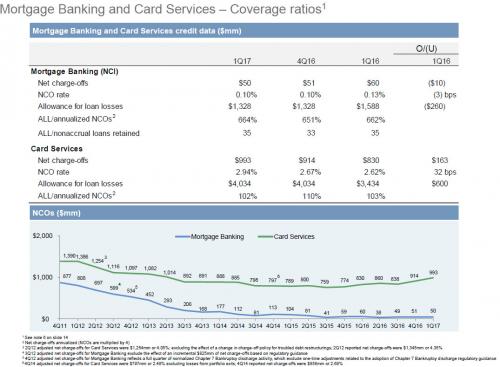Two weeks ago, when JPMorgan launched Q1 earnings season, we noted that while the results were generally good, one red flag emerged: the company’s credit card charge offs rose to just shy of $1 billion, the highest in four years.

It wasn’t just JPM: all other money-center banks reported similar trends, so we decided to look into it.
What we found was not pretty. According to the latest data from the S&P/Experian Bankcard Default Index, as of March 2017, the default rate on US credit cards had jumped to 3.31%, an increase of 13% from a year ago, and the highest default rate since June 2013.

This is how S&P/Experian explained the recent 5 consecutive month surge in bank card default rates:
The bank card default rate recorded a 3.31% default rate, up nine basis points from February. Auto loan defaults came in at 1.00%, down five basis points from the previous month. The first mortgage default rate came in at 0.75%, up one basis point from February and reaching a one-year high.
The National bank card default rate of 3.31% in March sets a 45-month high. When comparing the bank card default rate among the four census divisions, the bank card default rate in the South is considerably higher than the other three census divisions. Upon further analysis to the South’s three census regions, East South Central – comprised of Kentucky, Tennessee, Alabama, and Mississippi – has the highest bank card default rate.Â

“Currently the debt service ratio for consumer credit – the percentage of disposable income required to service consumer credit debt – is 5.58%, up from its recent low of 4.92% in 2012 but lower than the 6.01% peak seen shortly before the financial crisis.  The higher interest rates that most analysts expect over 2017-2018 are likely to combine with continued growth in consumer credit to push the debt service ratio back towards the 6% level,” said David M. Blitzer, Managing Director and Chairman of the Index Committee at S&P Dow Jones Indices

